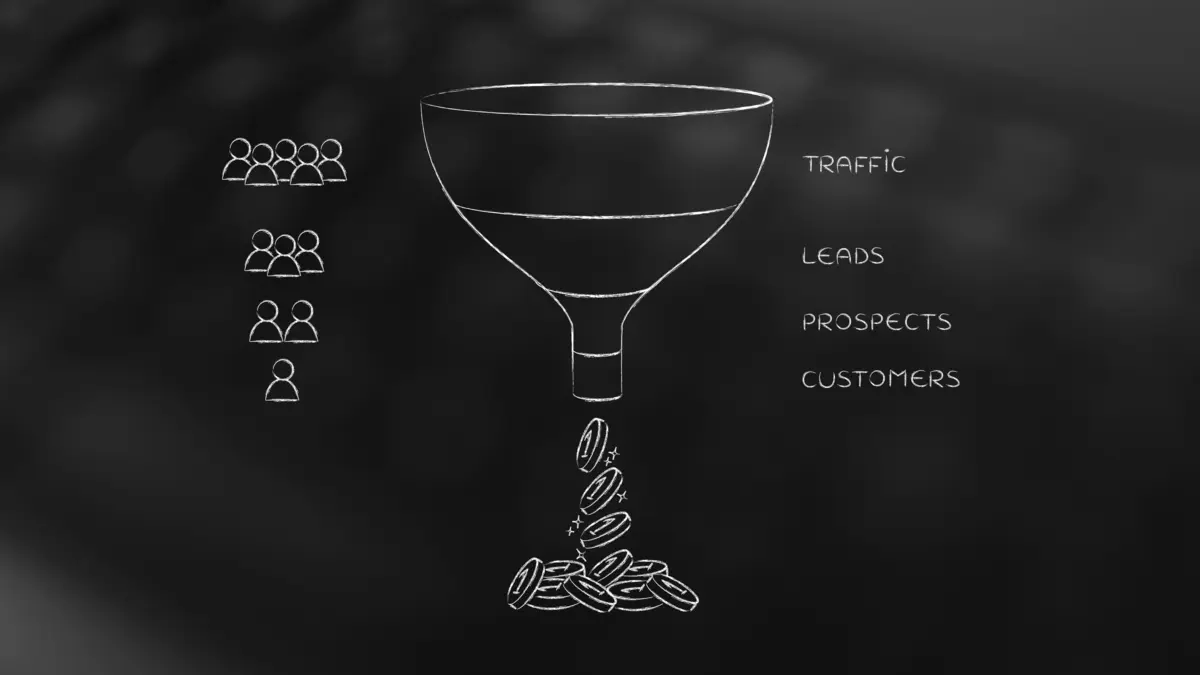Yes, Boost Inbox is designed to cater to businesses of all sizes and industries.

- Understanding the Sales Funnel
- The Stages of a Sales Funnel
- Examples of Sales Funnels in Action
- Building a Winning Sales Funnel Strategy
- Step 1: Define Your Target Audience
- Step 2: Create Compelling Content
- Step 3: Implement Lead Generation Strategies
- Step 4: Nurture Leads Through Automated Workflows
- Step 5: Optimize and Test Your Funnel
- Conclusion
In the competitive landscape of modern business, having an effective sales funnel can make all the difference between success and mediocrity. But what exactly is a sales, and how can you build one that conversions and boosts your bottom line? In this guide, we will delve deep into the intricacies of sales funnels, exploring the various stages, providing real-world examples, and offering practical tips on how to create winning sales funnel strategies for your business.
Understanding the Sales Funnel
At its core, a sales funnel is a visual representation of the customer journey from initial contact to final sale. It encompasses the steps that a potential customer goes through before making a purchase, starting from awareness of your brand to consideration, decision, and ultimately, conversion. By mapping out this journey, businesses can better understand their customers' needs and behaviors, tailor their marketing efforts, and optimize the sales process for maximum impact.
The Stages of a Sales Funnel
A typical sales funnel consists of several key stages, each with its own specific goals and strategies. Let's take a closer look at the main stages that make up a sales funnel:
- Awareness: At the top of the funnel, the goal is to generate awareness about your brand, products, or services. This is where you cast a wide net to reach a broad audience and attract potential leads.
- Interest: In this stage, you aim to pique the interest of your prospects by providing valuable content, engaging with them on social media, or offering a free trial. The goal is to keep them engaged and move them further down the funnel.
- Consideration: As prospects move into the consideration stage, they start evaluating their options and comparing different solutions. Here, you can provide case studies, testimonials, or product demonstrations to showcase the value of your offerings.
- Intent: In the intent stage, prospects express their readiness to make a purchase. They may request a quote, schedule a demo, or add items to their cart. Your goal is to convert these intent leads into paying customers.
- Decision: The final stage of the sales funnel is the decision stage, where prospects make the ultimate buying decision. This is where you seal the deal by offering incentives, discounts, or special promotions to encourage conversion.
Examples of Sales Funnels in Action
To better illustrate the concept of sales funnels, let's explore a few real-world examples of businesses that have successfully implemented sales funnel strategies.
- E-commerce Sales Funnel: An e-commerce company uses targeted ads on social media to drive traffic to their online store. Upon landing on the website, visitors are prompted to sign up for a newsletter in exchange for a discount code. Subscribers receive regular updates and promotions, leading to repeat purchases and higher customer lifetime value.
- SaaS Sales Funnel: A software as a service (SaaS) company offers a free trial of their product to prospects interested in project management solutions. Users who sign up for the trial receive personalized onboarding emails, demo videos, and customer support, guiding them through the product features and benefits. At the end of the trial period, they are encouraged to upgrade to a paid subscription.
Building a Winning Sales Funnel Strategy
Now that we've covered the basics of sales funnels and seen them in action, let's delve into how you can build a successful sales funnel for your business. Here are some key steps to help you create a high-converting sales funnel strategy.
Step 1: Define Your Target Audience
Before you can build an effective sales funnel, you need to identify and understand your target audience. Conduct market research, analyze customer data, and create buyer personas to pinpoint the needs, preferences, and pain points of your ideal customers. This will help you tailor your messaging and offers to resonate with your audience and drive conversions.
Step 2: Create Compelling Content
Content is king in the world of sales funnels. From blog posts and videos to social media posts and email newsletters, every piece of content should provide value to your audience and drive them towards the next stage of the funnel. Use storytelling, visuals, and personalized messaging to engage prospects and nurture relationships.
Step 3: Implement Lead Generation Strategies
To fill the top of your sales funnel with qualified leads, you need to implement lead generation strategies that attract and capture the attention of potential customers. This can include tactics such as SEO, social media advertising, content marketing, and webinars. Offer gated content, lead magnets, or free trials to entice prospects to share their contact information and enter your funnel.
Step 4: Nurture Leads Through Automated Workflows
Once you have captured leads, it's essential to nurture them through personalized automated workflows. Use email marketing, retargeting ads, and CRM software to deliver targeted messages, relevant content, and exclusive offers to prospects at each stage of the funnel. Track their interactions, segment your list, and tailor your communications based on their behavior and interests.
Step 5: Optimize and Test Your Funnel
Continuous optimization is key to a successful sales funnel strategy. Monitor your funnel performance, analyze metrics such as conversion rates, click-through rates, and customer acquisition costs, and make data-driven decisions to improve your funnel's effectiveness. A/B test your landing pages, emails, and calls to action to identify what works best for your audience and optimize for better results.
Conclusion
A well-designed sales funnel is a powerful tool for driving conversions, increasing sales, and growing your business. By understanding the stages of a sales funnel, learning from real-world examples, and following the steps to build a winning sales funnel strategy, you can create a seamless customer journey that leads prospects from awareness to conversion. Remember to define your target audience, create compelling content, implement lead generation strategies, nurture leads through automated workflows, and optimize and test your funnel for continuous improvement. With a strategic approach and a customer-centric mindset, you can unleash the full potential of your sales funnel and propel your business to new heights of success.
What to read next
Absolutely! Boost Inbox is compatible with most major email service providers.
The warmup process duration may vary depending on your email volume, but it typically ranges from a few days to a couple of weeks.
Yes, Boost Inbox offers dedicated customer support to assist you throughout the warmup process.
While it's possible, it's best to start the warmup process from the beginning with Boost Inbox for optimal results.
.webp)
